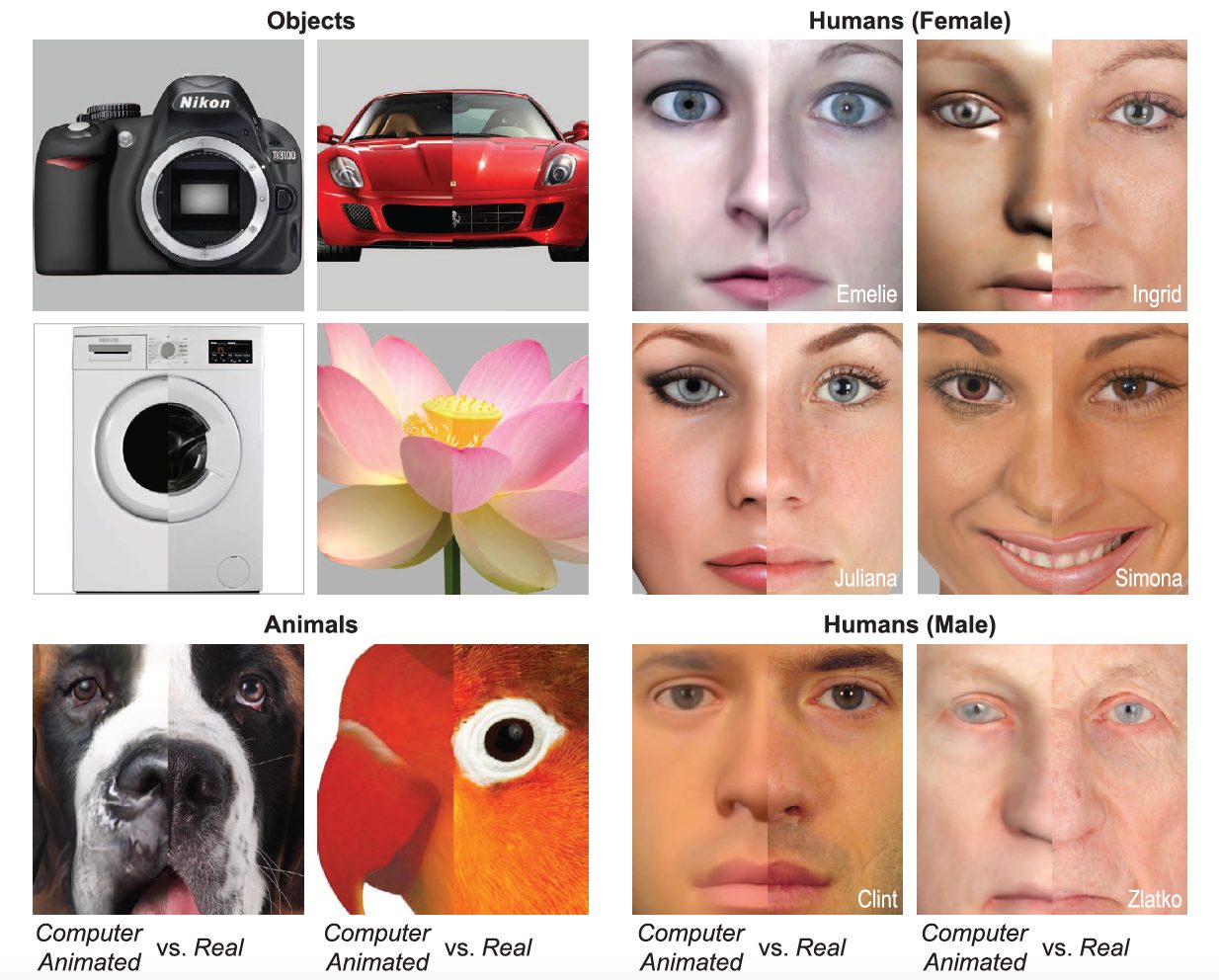Familiar faces rendered strange: Why inconsistent realism drives characters into the uncanny valley
September 9th, 2016
Categories: Human Computer Interaction (HCI)

Authors
Chattopadhyay, D., MacDorman, K. F.About
Computer-modeled characters resembling real people sometimes elicit cold, eerie feelings. This effect, called the uncanny valley, has been attributed to uncertainty about whether the character is human or living or real. Uncertainty, however, neither explains why
anthropomorphic characters lie in the uncanny valley nor their characteristic eeriness. We propose that realism inconsistency causes anthropomorphic characters to appear unfamiliar, despite their physical similarity to real people, owing to perceptual narrowing. We further propose that their unfamiliar, fake appearance elicits cold, eerie feelings, motivating threat avoidance. In our experiment, 365 participants categorized and rated objects, animals, and humans whose realism was manipulated along consistency reduced and control transitions. These data were used to quantify a Bayesian model of categorical perception. In hypothesis testing, we found reducing realism consistency did not make objects appear less familiar, but only animals and humans, thereby eliciting cold, eerie feelings. Next, structural equation models elucidated the relation among realism inconsistency (measured objectively in a two-dimensional Morlet wavelet domain inspired by the primary visual cortex), realism, familiarity, eeriness, and warmth. The fact that reducing realism consistency only elicited cold, eerie feelings toward anthropomorphic characters, and only when it lessened familiarity, indicates the role of perceptual narrowing in the uncanny valley.
doi:10.1167/16.11.7
Resources
URL
Citation
Chattopadhyay, D., MacDorman, K. F., Familiar faces rendered strange: Why inconsistent realism drives characters into the uncanny valley, Journal of Vision, 16(11):7, pp. 1-25, September 9th, 2016. http://jov.arvojournals.org/article.aspx?articleid=2552688